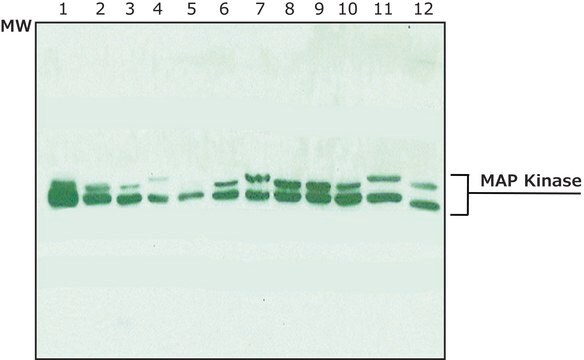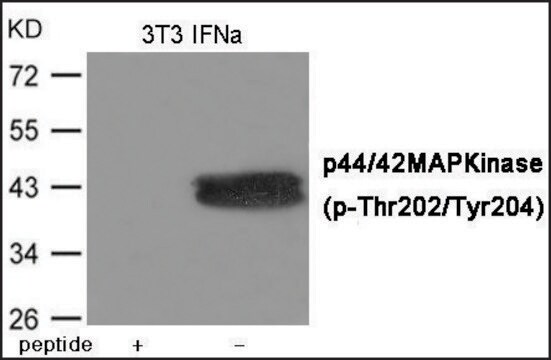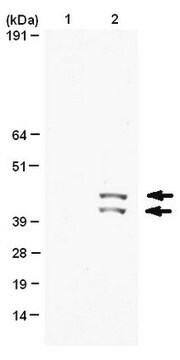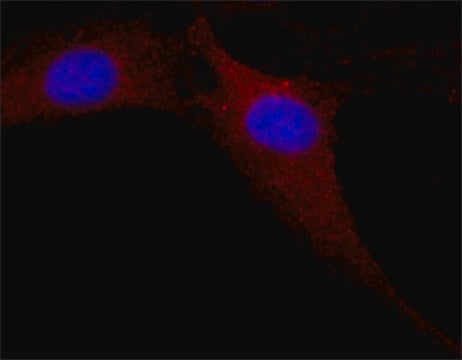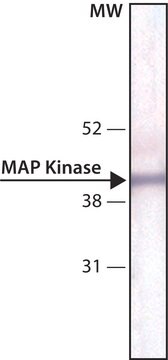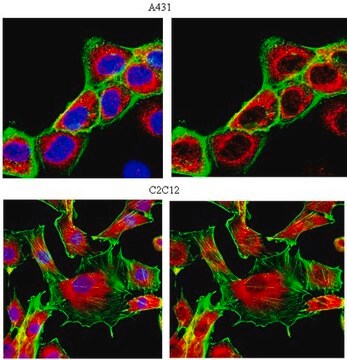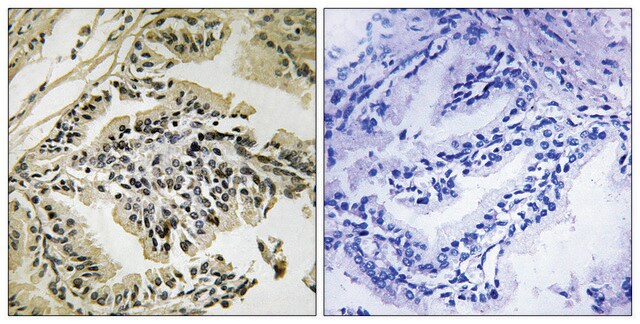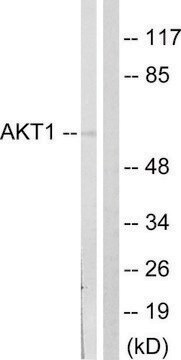M8159
Monoclonal Anti-MAP Kinase, Activated (Diphosphorylated ERK-1&2) antibody produced in mouse
clone MAPK-YT, ascites fluid
Synonym(s):
Monoclonal Anti-MAP Kinase, Activated (Diphosphorylated ERK-1&2)
About This Item
Recommended Products
biological source
mouse
Quality Level
conjugate
unconjugated
antibody form
ascites fluid
antibody product type
primary antibodies
clone
MAPK-YT, monoclonal
mol wt
antigen ERK-1 44 kDa
antigen ERK-2 42 kDa
contains
15 mM sodium azide
species reactivity
human, Caenorhabditis elegans, Xenopus, Drosophila, hamster, rat, bovine, mouse, yeast
technique(s)
immunocytochemistry: suitable
immunohistochemistry (formalin-fixed, paraffin-embedded sections): suitable
immunoprecipitation (IP): suitable
indirect ELISA: suitable
western blot: 1:10,000 using rat brain extract
isotype
IgG1
UniProt accession no.
shipped in
dry ice
storage temp.
−20°C
target post-translational modification
unmodified
Gene Information
human ... MAPK1(5594) , MAPK3(5595)
mouse ... Mapk1(26413) , Mapk3(26417)
rat ... Mapk1(116590) , Mapk3(50689)
Looking for similar products? Visit Product Comparison Guide
General description
Specificity
Immunogen
Application
Monoclonal Anti-MAP Kinase, Activated (Diphosphorylated ERK-1&2) may be used for the localization of the active, dually-phosphorylated, form of MAP kinase using various immunochemical assays such as immunoblotting of cultured cells and tissue extracts, ELISA, immunocytochemistry, immunoprecipitation, and in immunohistochemistry (formalin and formaldehyde-fixed sections). Reactivity has been observed with human, bovine, rat, mouse, Drosophila, Spodoptera frugiperda, and yeast.
Monoclonal Anti-MAP Kinase, activated (Diphosphorylated ERK-1&2) antibody has been used in plasmid and transient transfection and western blotting.
Biochem/physiol Actions
Physical form
Storage and Stability
Disclaimer
Not finding the right product?
Try our Product Selector Tool.
Storage Class Code
12 - Non Combustible Liquids
WGK
WGK 2
Flash Point(F)
Not applicable
Flash Point(C)
Not applicable
Certificates of Analysis (COA)
Search for Certificates of Analysis (COA) by entering the products Lot/Batch Number. Lot and Batch Numbers can be found on a product’s label following the words ‘Lot’ or ‘Batch’.
Already Own This Product?
Find documentation for the products that you have recently purchased in the Document Library.
Customers Also Viewed
Articles
Alzheimer's disease (AD) is the most common cause of dementia in the elderly and is characterized by gradual loss of cognitive functions.
Our team of scientists has experience in all areas of research including Life Science, Material Science, Chemical Synthesis, Chromatography, Analytical and many others.
Contact Technical Service